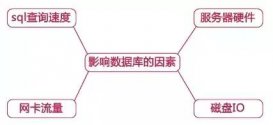數(shù)據(jù)庫中可以用datetime、bigint、timestamp來表示時(shí)間,那么選擇什么類型來存儲時(shí)間比較合適呢?
# 后數(shù)據(jù)準(zhǔn)備
通過程序往數(shù)據(jù)庫插入50w數(shù)據(jù)
數(shù)據(jù)表:
|
1
2
3
4
5
6
7
8
9
10
|
CREATE TABLE `users` ( `id` int(11) NOT NULL AUTO_INCREMENT, `time_date` datetime NOT NULL, `time_timestamp` timestamp NOT NULL DEFAULT CURRENT_TIMESTAMP ON UPDATE CURRENT_TIMESTAMP, `time_long` bigint(20) NOT NULL, PRIMARY KEY (`id`), KEY `time_long` (`time_long`), KEY `time_timestamp` (`time_timestamp`), KEY `time_date` (`time_date`)) ENGINE=InnoDB AUTO_INCREMENT=500003 DEFAULT CHARSET=latin1 |
其中time_long、time_timestamp、time_date為同一時(shí)間的不同存儲格式
實(shí)體類users
|
1
2
3
4
5
6
7
8
9
10
11
12
13
14
15
16
17
18
19
20
21
22
23
24
25
26
27
|
/** * @author hetiantian * @date 2018/10/21 * */@Builder@Datapublic class Users { /** * 自增唯一id * */ private Long id; /** * date類型的時(shí)間 * */ private Date timeDate; /** * timestamp類型的時(shí)間 * */ private Timestamp timeTimestamp; /** * long類型的時(shí)間 * */ private long timeLong;} |
dao層接口
|
1
2
3
4
5
6
7
8
9
10
|
/** * @author hetiantian * @date 2018/10/21 * */@Mapperpublic interface UsersMapper { @Insert("insert into users(time_date, time_timestamp, time_long) value(#{timeDate}, #{timeTimestamp}, #{timeLong})") @Options(useGeneratedKeys = true,keyProperty = "id",keyColumn = "id") int saveUsers(Users users);} |
測試類往數(shù)據(jù)庫插入數(shù)據(jù)
|
1
2
3
4
5
6
7
8
9
10
11
12
|
public class UsersMapperTest extends BaseTest { @Resource private UsersMapper usersMapper; @Test public void test() { for (int i = 0; i < 500000; i++) { long time = System.currentTimeMillis(); usersMapper.saveUsers(Users.builder().timeDate(new Date(time)).timeLong(time).timeTimestamp(new Timestamp(time)).build()); } }} |
生成數(shù)據(jù)代碼方至github:https://github.com/TiantianUpup/sql-test/ 如果不想用代碼生成,而是想通過sql文件倒入數(shù)據(jù),文末附sql文件網(wǎng)盤地址。
# sql查詢速率測試
通過datetime類型查詢:
|
1
|
select count(*) from users where time_date >="2018-10-21 23:32:44" and time_date <="2018-10-21 23:41:22" |
耗時(shí):0.171
通過timestamp類型查詢
|
1
|
select count(*) from users where time_timestamp >= "2018-10-21 23:32:44" and time_timestamp <="2018-10-21 23:41:22" |
耗時(shí):0.351
通過bigint類型查詢
|
1
|
select count(*) from users where time_long >=1540135964091 and time_long <=1540136482372 |
耗時(shí):0.130s
結(jié)論 在InnoDB存儲引擎下,通過時(shí)間范圍查找,性能bigint > datetime > timestamp
# sql分組速率測試
使用bigint 進(jìn)行分組會每條數(shù)據(jù)進(jìn)行一個(gè)分組,如果將bigint做一個(gè)轉(zhuǎn)化在去分組就沒有比較的意義了,轉(zhuǎn)化也是需要時(shí)間的
通過datetime類型分組:
|
1
|
select time_date, count(*) from users group by time_date |
耗時(shí):0.176s
通過timestamp類型分組:
|
1
|
select time_timestamp, count(*) from users group by time_timestamp |
耗時(shí):0.173s
結(jié)論 在InnoDB存儲引擎下,通過時(shí)間分組,性能timestamp > datetime,但是相差不大
# sql排序速率測試
通過datetime類型排序:
|
1
|
select * from users order by time_date |
耗時(shí):1.038s
通過timestamp類型排序
|
1
|
select * from users order by time_timestamp |
耗時(shí):0.933s
通過bigint類型排序
|
1
|
select * from users order by time_long |
耗時(shí):0.775s
結(jié)論:在InnoDB存儲引擎下,通過時(shí)間排序,性能bigint > timestamp > datetime
# 小結(jié)
如果需要對時(shí)間字段進(jìn)行操作(如通過時(shí)間范圍查找或者排序等),推薦使用bigint,如果時(shí)間字段不需要進(jìn)行任何操作,推薦使用timestamp,使用4個(gè)字節(jié)保存比較節(jié)省空間,但是只能記錄到2038年記錄的時(shí)間有限。
文中sql文件網(wǎng)盤地址: 鏈接: https://pan.baidu.com/s/1cCRCxtTlPriXMERGsbnb_A 提取碼: hbq2
到此這篇關(guān)于Mysql數(shù)據(jù)庫中datetime、bigint、timestamp來表示時(shí)間選擇,誰來存儲時(shí)間效率最高的文章就介紹到這了,更多相關(guān)數(shù)據(jù)庫datetime、bigint、timestamp內(nèi)容請搜索服務(wù)器之家以前的文章或繼續(xù)瀏覽下面的相關(guān)文章希望大家以后多多支持服務(wù)器之家!
原文鏈接:https://juejin.cn/post/6844903701094596615














